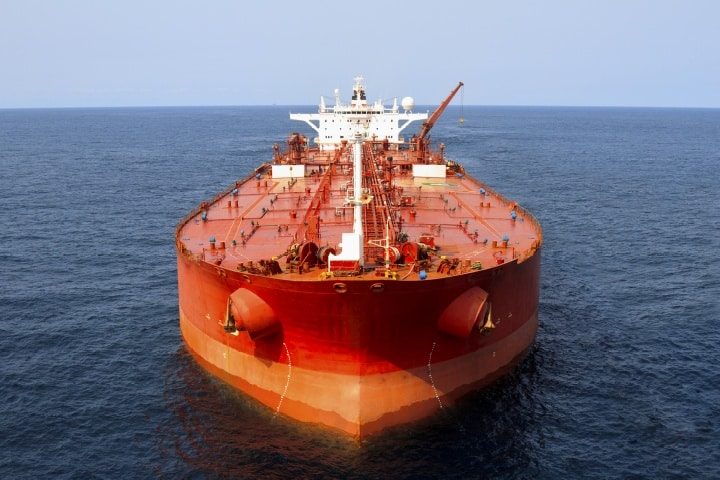
Western states that have forbidden direct purchases of Russian oil are currently purchasing the oil indirectly from third countries, according to a report from the Finland-based Centre for Research on Energy and Clean Air (CREA) on April 19.
The EU (European Union), Australia, and most of the Group of Seven (G7) countries imported a total of $45.9 billion worth of oil products from countries that have become the largest purchasers of Russian crude in the year since the start of the Russo-Ukraine conflict in February 2022.
These imports came despite bans or restrictions of Russian crude-oil imports. In December, Western countries allied with the United States had enforced sanctions as well as a $60-per-barrel price cap on Russian oil. These measures ban Western shipping, insurance, and re-insurance companies from dealing with Russian cargoes unless they are sold at or below the set price.
Likewise, additional limitations on Russian petroleum products were unveiled in February this year, with a price limit of $100 per barrel for Russian diesel, jet fuel, and gasoline, as well as a $45-per-barrel cap for other oil products that trade below the crude price.
Although the so-called “price cap coalition” targeted crude imports, it has escalated purchases of refined products from “oil-laundering” countries, CREA asserted.
Nonetheless, these price-cap coalition countries have circumvented existing sanctions and stepped up their imports of refined oil products from countries that have become the largest importers of Russian crude.
The same report posited that China and India were the largest recipients of Russian exporting products and crude oil, with the Indian port of Sikka as the largest oil product export port to the countries that imposed price caps on Russia.
Notably, 2.7 billion euros worth of petroleum products have been exported from Sikka to price-cap coalition countries from December 2022 to February 2023. Furthermore, owing to a pipeline connection to Russia, the PetroChina Dalian refinery in China is the largest recipient of Russian crude oil globally, primarily exporting oil products from Dalian to Australia.
Based on CREA, “among the price cap coalition, the largest importer of oil products from the laundromat countries was the EU,” with imports totaling $19.4 billion since last February. Australia allegedly bought $8.8 billion worth of refined crude in the 12-month period, followed by the United States with $7.2 billion, the U.K. with $5.5 billion, and Japan with $5.2 billion. The biggest proportions of imported oil products into price cap coalition countries were for diesel (29 percent), jet fuel (23 percent), and gasoil (13 percent).
Additionally, China’s monthly exports of oil products to the EU and Australia exceeded record levels in late 2022, CREA disclosed.
Premised on ship-tracking data, the report stated that the price-cap coalition countries increased imports of refined oil products from China by 94 percent, Türkiye by 43 percent, the United Arab Emirates by 23 percent, Singapore by 33 percent, and India by two percent.
“The price cap coalition countries are responsible for the vast majority of the increase in laundromat countries’ exports of oil products,” CREA said, adding that 56 percent of Russian oil transported to new destinations “has been transported by vessels owned and/or insured” by Western nations.
On April 17, the U.S. Treasury Department warned U.S. companies about potential circumvention of the price cap on Russian oil being exported through the Eastern Siberia Pacific Ocean (ESPO) pipeline and ports in Russia’s Far East.
The ministry’s Office of Foreign Assets Control (OFAC), a watchdog, contended that some crude exports from the ESPO and transported through Pacific ports such as Kozmino, may be trading above the Western price cap enforced on Russia last year.
OFAC speculated that U.S. entities may have been “unaware that they are providing covered services involving Russian oil purchased above the price cap, as the non-US persons involved in the exports may have provided incomplete or false documentation or used other deceptive practices.”
Also, OFAC claimed that some tankers transporting Russian oil may have thwarted their automatic identification systems to hide their activities at Kozmino or other ports, in a practice dubbed as “spoofing.”
“For example, basic vessel tracking data may show the tanker at one location, but more sophisticated reporting from maritime intelligence services may show that the vessel called at the port of Kozmino or another eastern port in the Russian Federation,” OFAC said, elaborating that spoofing could also conceal ship-to-ship transfers “carried out to disguise the origin of Russian oil.”
The watchdog then cautioned that individuals or companies that circumvent, avoid, or breach the price cap could face civil or criminal enforcement actions. To boot, the alert note issued informed commodities traders that shipping, freight, and insurance costs were excluded from the price cap, highlighting that omitting a mention of such costs could conceal purchases of Russian oil above the cap price.
“A refusal by a counterparty to provide documentation showing Russian oil or Russian petroleum products were purchased at or below the price cap (when, for example, the total price inclusive of other costs is above the cap) should be considered a red flag for possible evasion of the price cap.”
OFAC also called for traders to keep documents proving that they purchased Russian crude and oil products at or below the imposed ceiling.
Reuters reported on April 17 that the price cap on Russian crude oil would remain unchanged at its current level of $60 a barrel, quoting a G7 official, in the wake of rising global crude prices and demands by some countries to reduce the price ceiling set by the bloc in response to Russian actions in Ukraine.
Subsequently, the official pointed out that the International Energy Administration (IEA) had claimed in its latest report that the G7 sanctions were successful “in not restricting global crude and product supplies, while simultaneously curtailing Russia’s ability to generate export revenue.”
Last week, the IEA divulged that Russian oil revenue in March had increased by $1 billion month-over-month to $12.7 billion, but was still 43-percent lower than one year ago. The agency also emphasized that Russian oil exports skyrocketed to a three-year high of 8.1 million barrels per day (bpd) last month. Exports of Russian crude have been consistent at more than three million barrels daily, while global markets have been steady, the official continued.
The United States, Canada, the EU, Switzerland, Norway, Australia, and Japan have supported the oil price cap, with Tokyo subsequently exempted by Washington after Moscow threatened to stop supplying resources to Japan.



